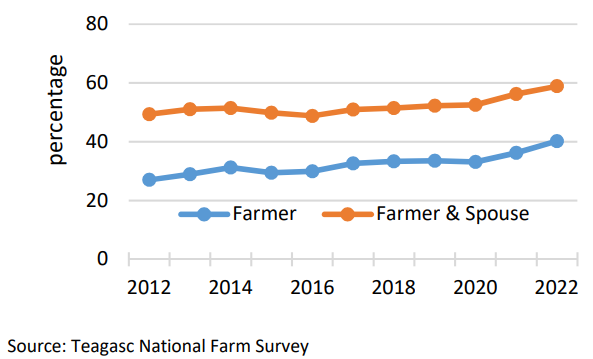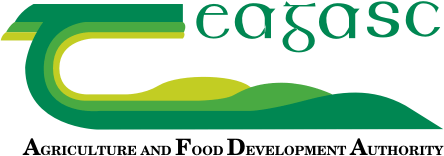23 November 2023
More farmers and their spouses worked off farm in 2022

The final results of the National Farm Survey 2022, representative of 85,000 farms nationally, were published earlier this week and they presented some interesting stats in relation to the uptake of off-farm employment at farm level.
The survey indicated that 40% of farm holders – across the enterprises surveyed – were employed off farm in 2022, while the proportion of farm households where either the farmer or spouse was employed off-farm increase to 59% in 2022. See figure 1 below, which tracks the changes in off-farm employment from 2012 to 2022.
Additionally, the NFS showed that the uptake of off-farm employment differed significantly between enterprises. Last year, drystock farmers were most likely to work off-farm. Some 46% of cattle rearing (mainly suckler) and cattle other (mainly finishing) farmers were employed off farm, while over half of sheep farmers in 2022 were reported as having an off-farm job. On tillage farms, some 45% were in off-farm employment.
Figure 1: Off-farm employment (farmer and spouse) 2012-2022

The National Farm Survey Results indicated that dairy remained the most profitable enterprise in 2022. Despite this though, 11% of dairy farmers worked off-farm and 56% of dairy farm households had an off-farm employment income, i.e. a high proportion of spouses worked off farm in dairy farm households.
The incidence of household off-farm employment for cattle rearing farms was similar at 58%, while the comparative figure on cattle other farms, sheep farms and tillage farms was 60%, 65% and 57%, respectively, for either the farm holder or spouse being employed off-farm.
Pensions
Additionally, the NFS examined the proportion of farmers receiving income through pensions. Overall, 30% of households were in receipt of pension income in 2022, reflecting the aging farming population and highlighting the challenge of generational renewal.
NFS data also indicated that the higher age profile of drystock farm households is reflected in the relatively larger proportion of households in receipt of pension income (through either the farm holder or spouse), with cattle rearing farms being the highest in 2022 at 41%.
This article was adapted from the Teagasc National Farm Survey 2022 report. Access the report here. Teagasc economists have also prepared Enterprise Factsheets, which provide a detailed breakdown of production costs and a range of farm technical performance measures for 2022. These can be viewed here.
Also read: Teagasc releases indicators of farm technical performance
Also read: What sets the top and bottom performing sheep farms apart?
Also read: 57% of farms earned less than €20,000 in 2022
